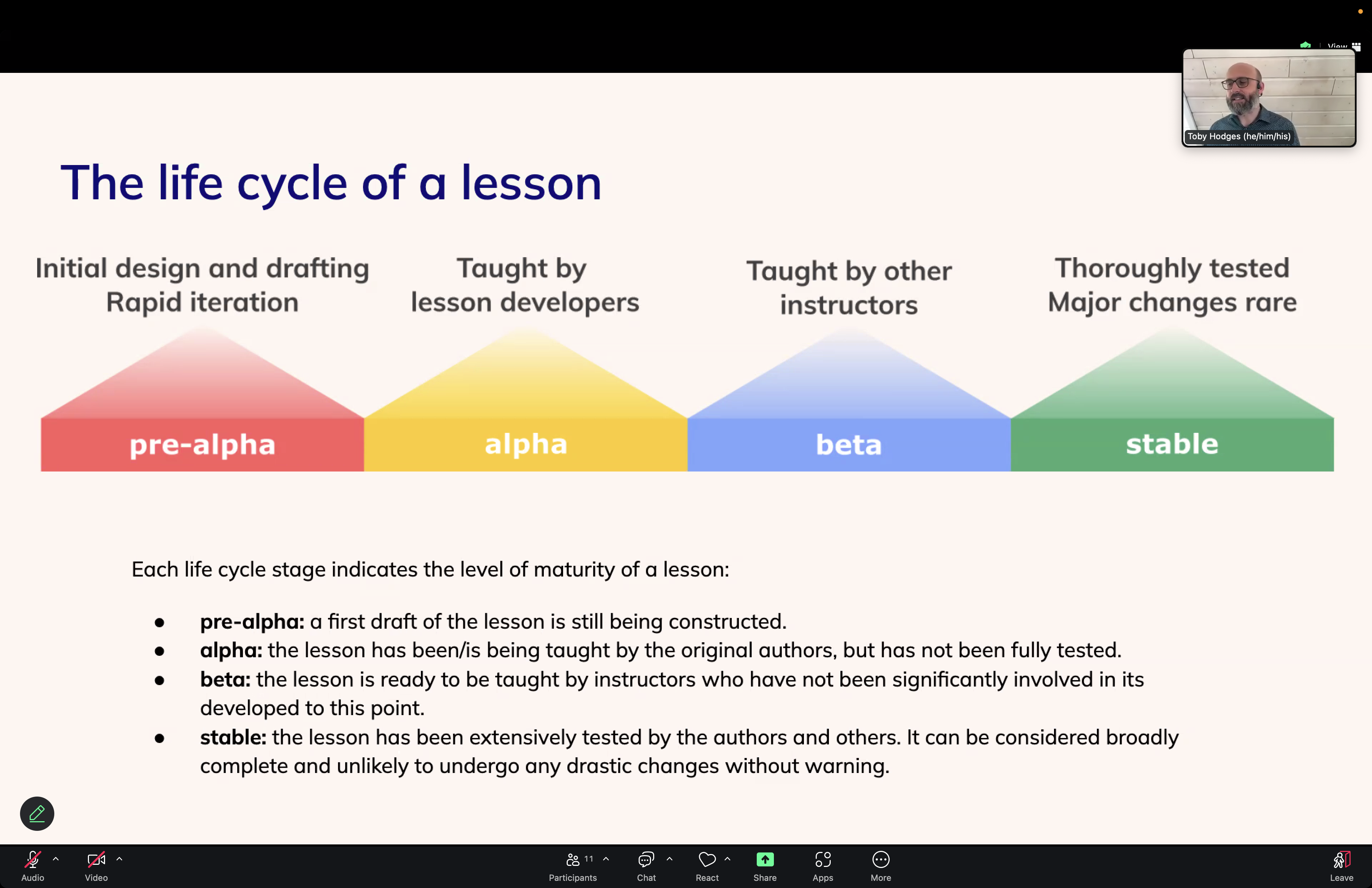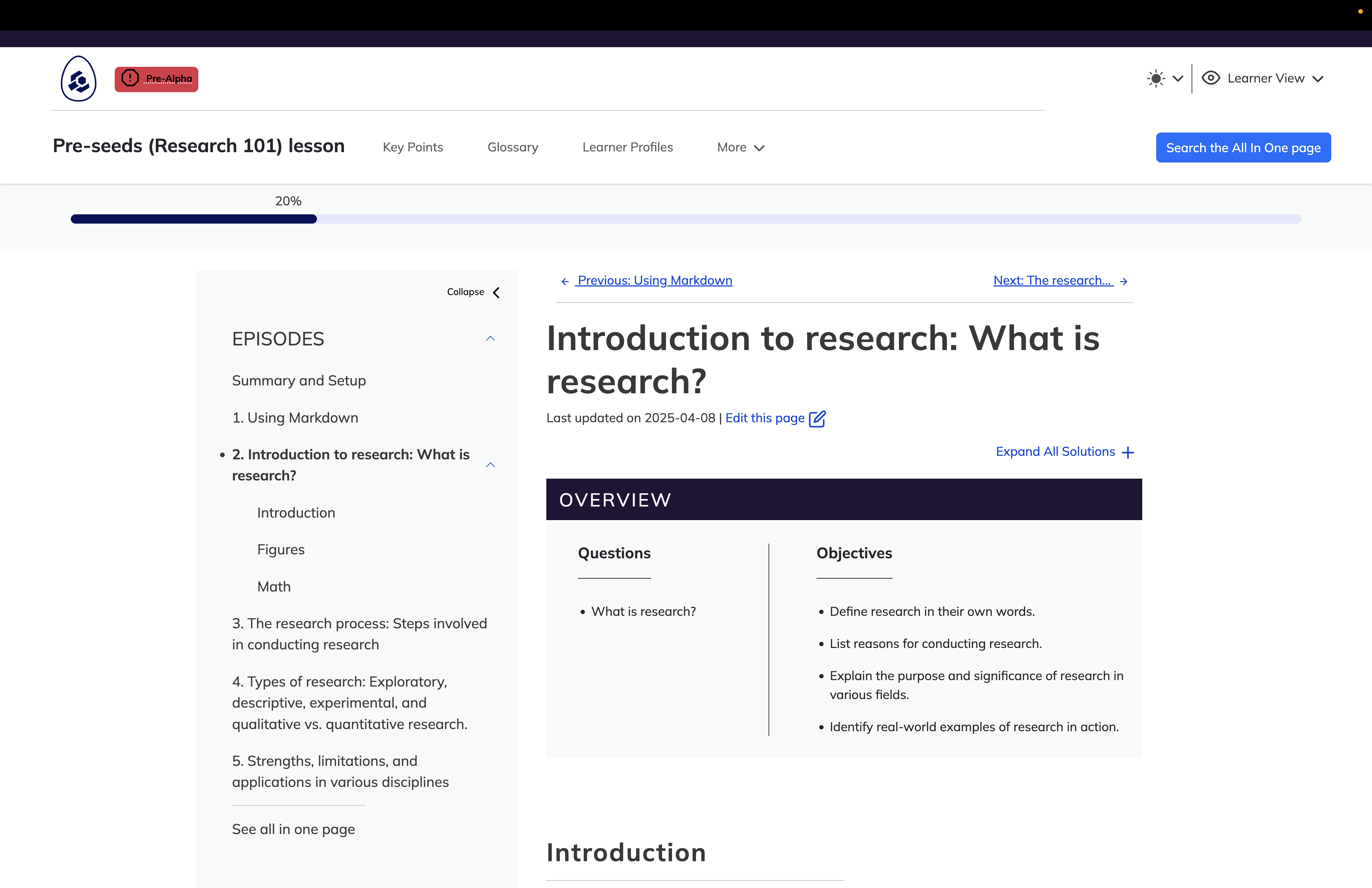By the Pre-Seeds Team
From the 25th to the 28th of March, the Pre-Seeds team participated in Part One of the Carpentries Collaborative Lesson Development Training (CLDT). It was an enriching experience, and we are deeply grateful to our facilitators, Toby Hodges, Aleksandra Nenadic, and the larger Carpentries leadership team. We learned a lot and want to share our reflections on what worked well, what could be improved, and how this training will shape our approach moving forward.
What Worked Well?
One of the standout aspects of the training was the simplicity and clarity of the sections. The lessons were structured in a way that was easy to follow, with a great balance of theoretical concepts and hands-on practice. The “show and tell” approach made it easier to understand and retain information, ensuring that learning was interactive rather than passive.

The training was highly interactive, with numerous breakout sessions that encouraged teamwork and the application of new knowledge. These sessions allowed us to collaborate effectively, refine our lesson drafts, and exchange ideas. We also appreciated the facilitators’ commitment to continuous feedback—at every step, they checked in to ensure we understood the content and had space to ask questions.
A particularly memorable part of the training was the structured approach to lesson development. We learned to start with preliminary considerations, such as identifying our target audience, understanding their prerequisite knowledge, and pinpointing knowledge gaps. From there, we moved into crafting clear learning objectives and exercises, and using storytelling to make lessons more engaging.
We were also introduced to the Carpentries Workbench as a platform for hosting our lesson, which was incredibly exciting. Learning about different types of fenced divs and how they render on the site was an eye-opener. The wealth of additional reading resources provided us with valuable opportunities to explore concepts further at our own pace.
What Could Be Improved?
While the training was well-structured and engaging, we felt that having a little more time for collaboration in breakout rooms would have been beneficial. Given the depth of each section, we sometimes felt rushed to complete activities. We understand that extending the training time may not be feasible, but perhaps adjusting the pacing slightly could help balance deep learning with time constraints.
What Will We Do Differently?

The insights we gained from CLDT will significantly impact how we design and refine our lessons. Moving forward, we will:
- Design our lessons as episodes, using a storytelling approach to enhance engagement.
- Integrate both formative and summative exercises into each episode.
- Leverage breakout rooms to encourage collaboration in our training sessions.
- Pilot our lesson with a small group (5–20 people) to gather feedback and iterate on improvements.
- Host our course on the Carpentries Workbench, ensuring it is well-structured and accessible.
The training has given us not just the tools but also the confidence to build high-quality, collaborative lessons. We appreciate the patience and support of our facilitators and look forward to applying everything we’ve learned.
Once again, a huge thank you to Toby, Aleks, and the Carpentries team for this incredible learning experience!


